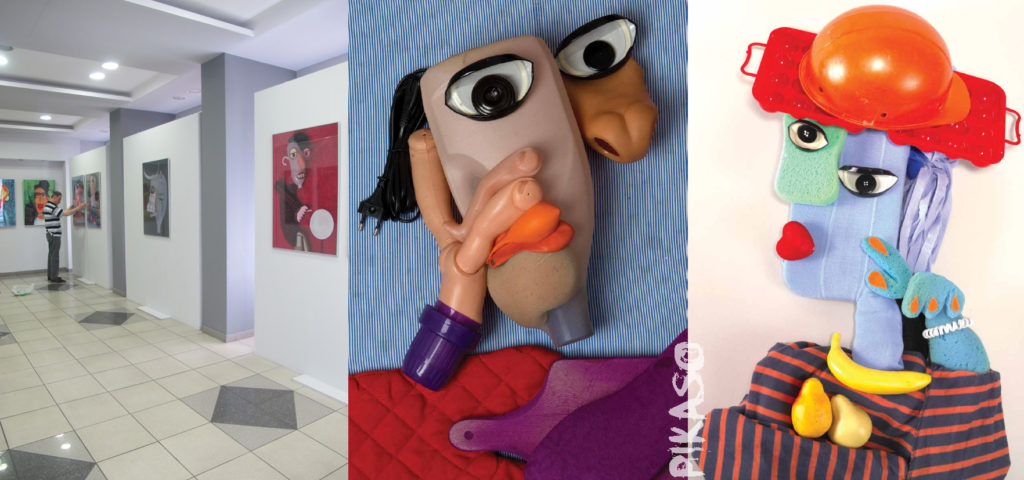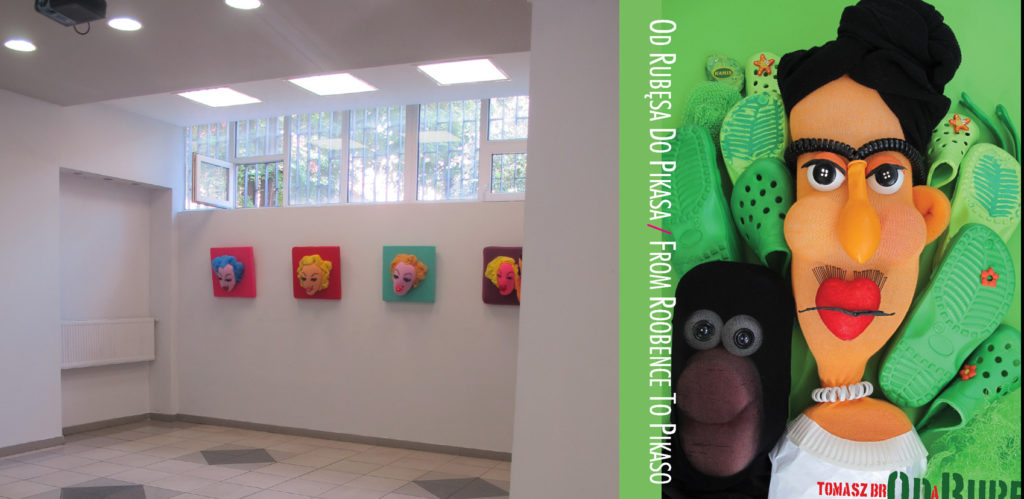or Tomasz Broda’s Story of Art.
Roobence – just the first glance
Freeda Kalo – a marsmallow!
Take two Pikasos and four Dewrers
You will receive a perfect mural
Endie Worol – your painterly rock’n’roll
With Vandike you’ll get a Facebook “like”
The name Vangog provides a fancy blog
The world demands masterpieces
Therefore I made these, with kisses
Tomasz Broda
THE FORM LESSON OF DR. BRODA
Dr. Tomasz Broda teaches students in the Graphic Design Studio at the Wrocław Academy of Art and Design, how to get from careful analysis to accurate synthesis; he teaches them conscious perception, brilliant mental shortcuts, and last but not least, not forgetting about an important ingredient, namely humour. He is very convincing in this didactic process as he applies all these elements in his own artistic work.
A proof of this practice may be found in a new chapter of Broda’s original handbook under a home-grown title “From Roobence to Pikaso, or Tomasz Broda’s Story of Art”. Needless to say, a lot of people may like these three-dimensional caricatures. Art connoisseurs will giggle when they recognise famous portraits by Gainsborough, Holbein or Warhol, and self-portraits by Kahlo, Picasso or van Gogh; for the beginners, it is a game of quick associations and recognising styles of the artists parodied by Broda; not only children will burst with laughter when pointing out noses made of sponge or unblown balloons, eyes made of bottle and jar caps or safety pins with a button iris, hands made of plastic forks, hair – of telephone wires, heads – of detergent containers, and the whole range of every-day items.
Tomasz Broda is active in various areas of artistic work: satirical drawing, book and press illustration, poster, only occasionally he expresses himself in his favourite large scale (murals). When one looks at 20 years of his oeuvre, it is not difficult to notice that f o r m is both a starting point and an aim of his artistic work. Trailing object qualities and characteristic features of portrayed people, presenting them in a specific decorative manner – all these constitute an unmistakably recognisable style of Broda. The artist entertains a wide audience with his extraordinary sense for shapes, which, being juxtaposed with his original imagination and charming banality of materials used in his assemblages, provide both irresistibly comic and purely a r t f u l effect.
The concept of the cycle was born as early as in 2010, when the first masterpieces according to Broda were created, initially as illustrations to a calendar Make Yourself Art. The works by Broda show a contemporary comic concept, although their origins go back to Mannerism. For one should mention in this place a painter on the court of the emperor Rudolph II, an Italian in Prague, Giuseppe Arcimboldo. His allegorical compositions, sophisticated topical „portraits” (elaborated images of seasons or elements), whose iconography had probably been co-created by the mad Habsburg, are master’s formal shows. Following the 16th century concetti, Tomasz Broda looks at the world masterpieces, goes deep in their forms, deconstructs originals, and at the same time he plunders his household in search for objects with a potential, he sets off on an inspirational hunt to shops which were used to be called in a fairy-tale manner, “1001 Trifles”. He admits that his versions of masterpieces have histories of different kinds – some of them start with a particular artwork (it must be one from the series ”100 Paintings You Must See Before You Die”), some other begin with… a sink crate which resembles a pattern from Henry VIII’s rich costume.
Broda winks at us already in the very title of his cycle. The Polonised versions of names of painting masters allow us to break the first barrier of perception. Well, if we see “Wangog” instead of Van Gogh or “Łorol” to match Warhol, it is much easier to perform an almost professional analysis, especially when the forms which build up an artwork, created of such ordinary origins, become more legible. And somehow additionally we can see some other aspects as well: a bit of critical art (the cycle title refers to a series of recent big exhibitions in Wrocław), and sustainable art which applies recycling and ecological spirit. By choosing canon paintings from art history, Broda also joins the discourse concerning beauty – its importance but also its suspicious status in contemporary art.
Anita Wincencjusz-Patyna



